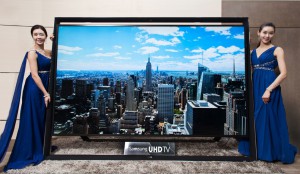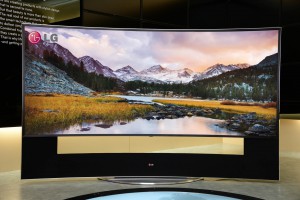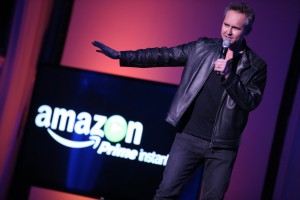Samsung is back again, this time to make good on a 4K TV promise they made at the 2013 International CES. They promised a 110-inch 4K Ultra HDTV before the end of the year, and here it is, with only one day to spare.
News
Latest News
4K Ultra HDTV Shipments Expected to Surge Dramatically in 2014
4K Ultra HD Television shipments are expected to reach 12.7 million units in 2014, up from 1.9 million units in 2013, according to the newest NPD DisplaySearch Quarterly Global TV Shipment and Forecast Report. As manufacturing processes are fine-tuned, NPD reveals that Ultra HDTV’s are becoming more affordable to mainstream consumers.
Netflix to Stream ‘House of Cards’ Season 2 in 4K Ultra HD
Netflix will stream Emmy award-winning political drama House of Cards Season 2 in 4K Ultra HD, according to an interview with Stuff.
LG and Samsung Each Announce 105-inch Curved Ultra HDTV’s
International CES 2014 is only a few weeks away, meaning that the world’s largest and most impressive televisions will be showcased. LG and Samsung are starting the party early, with their simultaneous announcements of a 105-inch Curved Ultra High Definition Television.
LG Launching 31-inch ‘Real 4K’ Monitor with Thunderbolt 2 at CES 2014
LG is bringing out a new 31-inch 4K monitor at CES 2014, dubbed “Real 4K” (31MU95). It features a DCI 4K IPS panel at 4,096 x 2,160 resolution in 19:10 ratio, a few pixels more than 4K Ultra HD (See: 4K vs. 4K Ultra HD). The new monitor also features a Thunderbolt 2 port with 20 Gbps data bandwidth, suitable for displaying 4K footage filmed with RED Epic and Scarlet cameras.
Amazon Studios to Film 2014 Originals in 4K Ultra HD
Amazon has announced that it will film all of their 2014 original series, including any new pilots, in 4K Ultra HD. 4K is the latest and most advanced in high definition video, utilizing displays with an aspect ratio of at least 16:9 and capable of showcasing video at a resolution of 3,840 x 2,160 pixels or 8.3 million pixels.
From The Producer: The Truth About 4K
Nobody actually views broadcast programmes in their native form — neither viewers nor producers. The first insight to this came several years ago when my production company in the UK was commissioned to make a programme for a major channel.















